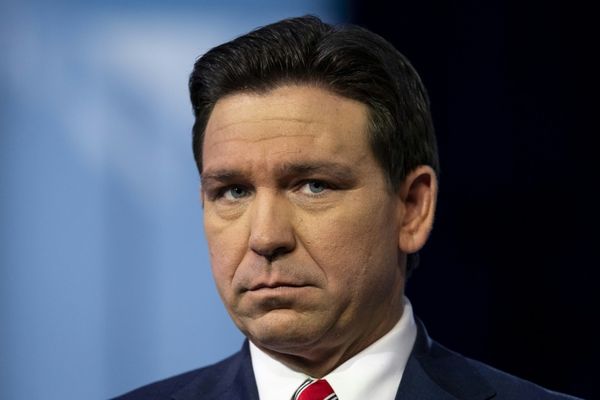
The federal government has ramped up pressure on NSW, Queensland, Victoria, Tasmania and South Australia to sign on to the next school funding agreement as it rushes out the blueprint for the next decade of primary and secondary education.
The states, which have been holding out on reaching a deal amid calls for higher levels of commonwealth funding for public schools, will now have until September to agree to the proposed 2.5% federal increase, or keep the old agreement.
The new agreement also ties school funding to targets – including Naplan results, attendance and graduation rates – but falls short of stating how or when all Australian schools will ever reach full funding levels.
Flagged to come into effect from 1 January 2025 and expire at the end of 2034, the agreement has been pushed out to get the signature of the Northern Territory government, poised to enter caretaker mode on Thursday.
The NT was the second jurisdiction to reach a bilateral agreement with the Albanese government in March for the commonwealth to double its Schooling Resource Standard (SRS) contribution to 40% due to their additional need, seeing all public schools reach 100% funding by 2029.
The SRS, agreed to by governments as part of Gonski reforms more than a decade ago, is the minimum dollar to provide a baseline education to students. Right now, only the ACT has reached it. 98% of public schools are underfunded and the majority of private schools are overfunded.
Western Australia, which reached its own bilateral funding agreement with the commonwealth in January to see the federal government lift its funding contribution to 22.5%, will sign the agreement in the coming weeks.
But the federal education minister, Jason Clare, is still working with the remaining states to secure their agreement to his current offer of a 2.5% overall increase in commonwealth funding to public schools by 2029.
State governments have maintained their opposition to the WA deal, banding together to demand a 5% commonwealth funding increase, citing budgetary pressures.
Clare said there were no “blank cheques” on offer in the next agreement.
“I want to invest billions into our public schools and I want to make sure that money makes a difference to the kids who really need it,” he said.
“The Northern Territory has signed up and Western Australia is expected to be the next to sign up. The remaining states and territories have until the end of September to confirm they will sign this agreement or continue with the current funding arrangements.”
The agreement offers $16bn to go to public schools over the next decade, addressing “equity and excellence, wellbeing for learning and engagement and a strong and sustainable workforce”.
The Albanese government will also introduce legislation into parliament that will scrap the current funding cap that stops the commonwealth from providing extra funding to public schools.
“I have made clear that the additional $16bn of funding for public schools I have put on the table will be tied to reforms,” Clare said.
They include early phonics and numeracy checks to identify students in need, catch-up tutoring, greater wellbeing support and rewarding teachers to work in schools that need them.
The agreement also sets out targets to improve graduation and attendance rates and close the equity gap for Aboriginal and Torres Strait Islander students; students living in regional, rural and remote locations; students with disability and students from educationally disadvantaged backgrounds.
By 2030, the proportion of students leaving school with a year 12 certificate is targeted to reach a record rate of 83.8%, compared with 76.3% in 2022.
The proportion of Aboriginal and Torres Strait Islander people (aged 20-24) with a year 12 or equivalent qualification is targeted to reach 96% by 2031, aligned with Closing the Gap targets. It would be a significant increase on 2021’s rate of 68.4%.
The proportion of students in Naplan’s “needs additional support” category for reading and numeracy is also targeted to reduce by 10%, with student attendance rates to reach pre-Covid levels of 91.4% by 2030.
Alongside the targets, strengthened reporting and public transparency requirements have been introduced to show how taxpayer funding is being invested, with an annual report from the commonwealth and a public reporting dashboard.







